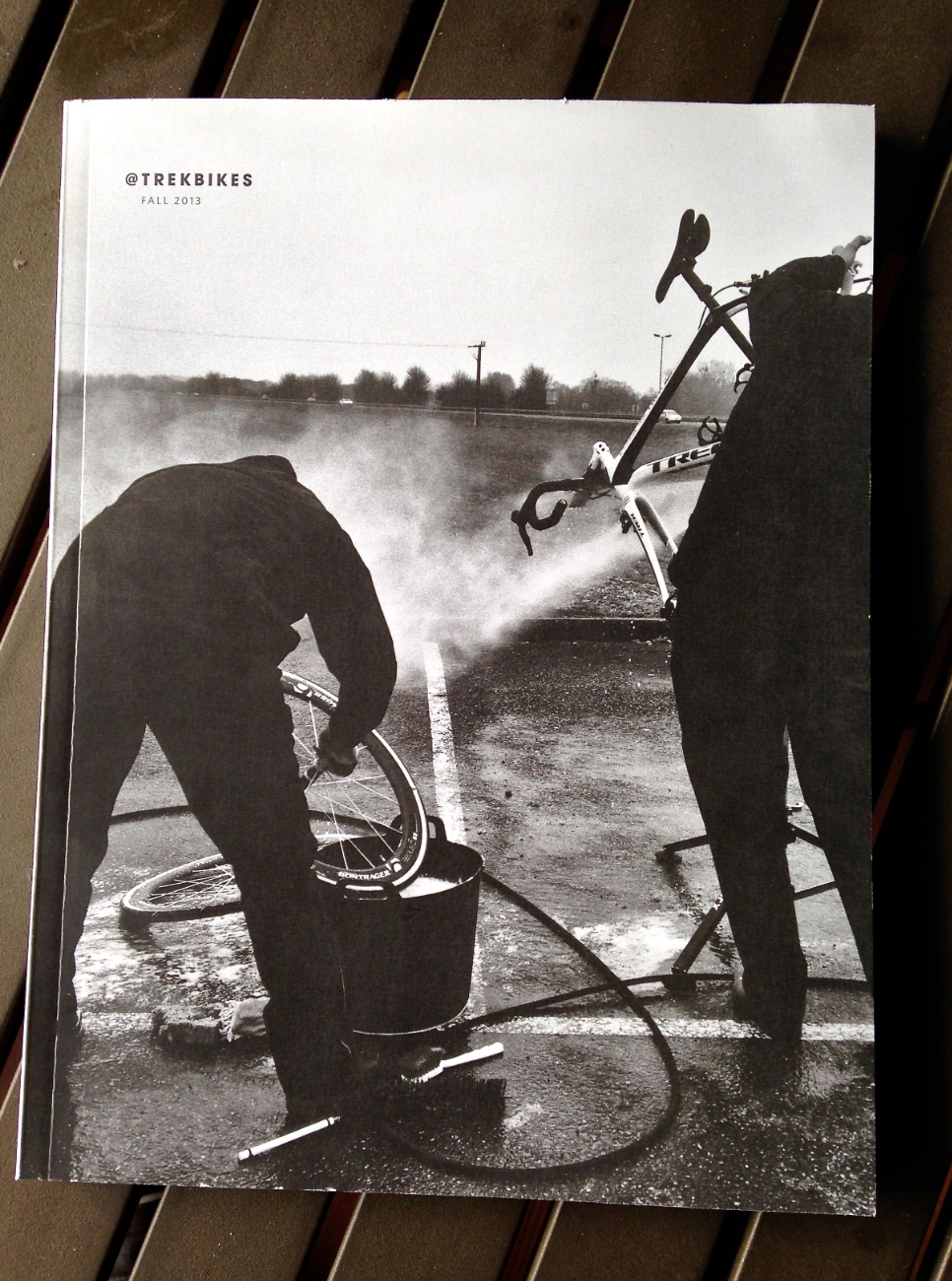
This is Trek Bicycles' first venture into a full-fledged brand magazine. I wrote three stories for the numero uno edition and it was great to visit Waterloo, Wisconsin, home of all the fast-moving genius.

WORDS:
The local town sign sprint is as much a part of road racing as the Tour de France or a storied one day monument or classic.
It’s a race without a number pinned on, a stage without a name and victory doesn’t bring champagne or a podium girl smooch. No UCI points are on offer but local bragging rights last a week, maybe two if we’re lucky.
Passing motorists hardly notice town signs or read the population figure or measured elevation. But for anyone on a fast road bike, the sign is a red kite, a provocation and launch pad.
The sign says “attack.”
The sign says “hammer, throw down, full gas.”
Every weekend there are thousands of town sign sprints on country roads you’ll never ride in places you'll probably never see. That’s the inherent beauty of the experience -- there’s no shortage of signs. We don’t possess enough fast twitch fibers for a mad dash down the Champs Elysees but we have our own roads and triumphs.
The signs are always there.
Gerald Ciolek, a sprinter for the Pro Continental squad MTN-Qhubeka, saw a sign that read San Remo. Minutes later he stunned his more famous breakaway rivals to win his first classic, La Primavera, Milan-San Remo.
Fabian Cancellara fought his way across 56 kilometers of cobblestones until at last he saw a sign that said velodrome. He then dug deeper inside himself to win his third Hell of the North on the track in Paris-Roubaix.
Our signs lack that degree of notoriety but they’re no less thrilling and the joy of victory tastes almost as sweet. A town sign sprint on a county road in Wisconsin or Florida or Colorado will not capture the attention of the cycling world. But epic is simply a matter of perspective. Any pro will tell you, a win is a win.
Local government workers have no idea that when they erect a town sign they have created a tactical race situation, a new Strava segment, a moment of potential glory.
A town sprint sign sends a personal message to the bike racer in all of us. It’s not that we’re leaving or entering town -- no, it’s far more exhilarating than that.
Sign says we’re flying.

EXCERPT:
How far are you willing to go?
If you’re Trek, then the first answer is roughly 2000 miles due west of Waterloo, Wisconsin. The Suspension Lab in Santa Clarita, California, is a think tank, skunk works and real world trail test facility.
Suspension Jedi Jose Gonzales runs the operation in SoCal. He’s got a CNC rig, high end mill and lathe and a pricy but indispensable Dyna machine, an apparatus that maps out shock progression rates and spring curves. He has by his own admission the best job he can conceivably imagine.
“We’re making our own parts, modification to parts, anything we can drill and turn, Change the thread pitch for an assembly. Manufacture the shaft for a prototype. We’ll make our own damper, says Gonzales. “We might change everything -- rebound valve, compression value, depending on what we want to adjust. It might be modifying Fox technology or develop a new technology.”
The Southern California location is no accident. Gonzales and his mechanical engineers -- the ones he stole from the military and NASA -- work at the nexus of suspension design innovation -- rally cars, motorcycles, Formula 1 and mountain bikes. It’s suspension Disneyland.
“Motorsports and mountain biking aren’t that far apart. From a knowledge base and capability standpoint, there’s a lot of common ground. They have more liberty than we do because of space,” says Gonzales. That’s the huge challenge: we need the performance of motorcycles at a fraction of the space and weight is so critical. We’re looking at a project that adds 50 grams to the bike, that’s a huge deal.”


